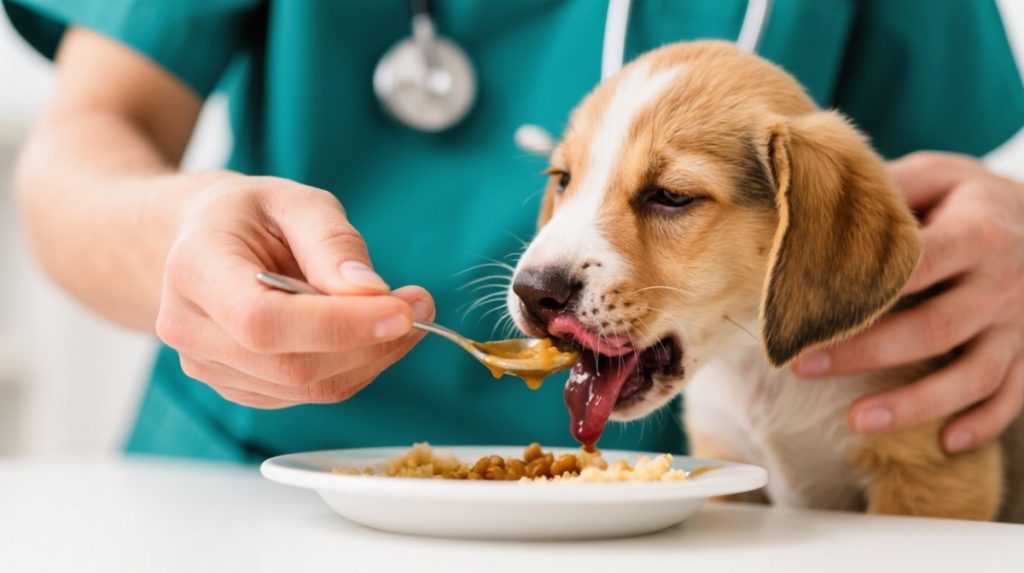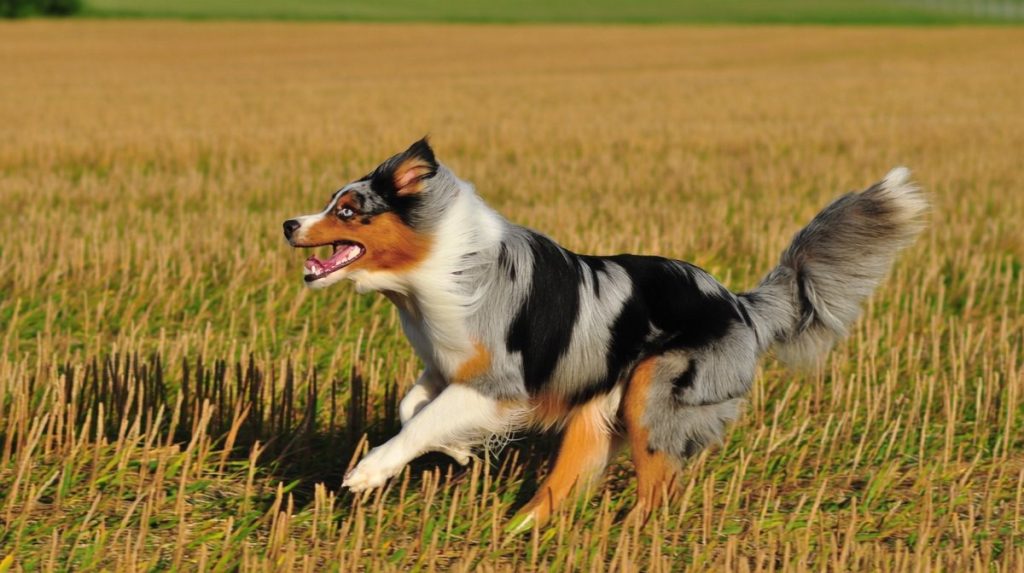Nothing breaks a pet parent’s heart faster than the sound of a puppy heaving. One moment your little explorer is bouncing around the kitchen; the next, he’s retching up breakfast and looking at you with those “fix-it” eyes. While vomiting in puppies can stem from anything too-exciting treat sampling to serious infectious disease, the first 24–48 hours at home are all about damage control: rehydration, gut rest, and a slow re-introduction of foods that calm rather than challenge the stomach. Done correctly, a gentle, nutritionally balanced recovery diet can short-circuit a downward spiral and get tails wagging again—often without an emergency bill.
Below, you’ll find a 2025 veterinarian-approved roadmap that walks you through the science of why certain foods soothe, how to transition safely, and which red flags demand immediate professional help. Think of it as your “puppy tummy toolkit”: evidence-based, practical, and adaptable to almost any breed, size, or scenario.
Best 10 What To Do When Your Puppy Vomits
Product information could not be loaded at this time.
## Why Puppies Vomit: Quick Physiology Refresher
Puppies are born with immature gastrointestinal (GI) tracts, lower gastric acid reserves, and a nervous system that’s still figuring out the difference between “novel” and “nauseating.” Add in a penchant for eating grass, rocks, and the occasional sock, and you’ve got a recipe for reflexive expulsion. Vomiting is a protective reflex mediated by the chemoreceptor trigger zone (CRTZ) in the brainstem; once activated, the stomach relaxes, the esophagus dilates, and abdominal muscles contract. Understanding this cascade helps you choose foods that don’t re-trigger the CRTZ.
## When to Skip Home Care and Call the Vet Immediately
Before you reach for any soothing snack, run through the “no-go” list: repeated vomiting within two hours, projectile expulsion, blood (frank red or coffee-ground), distended abdomen, pale gums, seizures, or suspected toxin ingestion. Puppies dehydrate faster than adults; any hesitation can tip a fragile patient into hypovolemic shock. When in doubt, phone your clinic—most offer free triage hotlines.
## The 6-Step Gut-Rest Protocol Every Owner Should Know
- Withdraw food for 6–12 hours (water allowed in ice-cube increments).
- Monitor hydration: pinch the scruff; if it tents >2 seconds, offer an electrolyte solution.
- Introduce a single novel, low-fat protein at 25% normal caloric density.
- Feed 1–2 tablespoons every two hours; double the volume only if no vomiting for 8 hours.
- Gradually thicken texture (liquid → purée → mash → kibble soak) over 48 hours.
- Transition to full ration over three days once stools normalize.
## Hydration First: Electrolyte Balance Before Anything Else
Dehydration is the #1 killer in vomiting puppies, not the vomiting itself. Aim for 50–60 mL/kg/day of balanced isotonic fluid. If you don’t have a veterinary electrolyte powder, dilute pediatric oral rehydration salts 1:1 with water and add a fingertip of honey for palatability. Offer via syringe or frozen chips—slow intake prevents gastric distension that can restart the vomit cycle.
## Bland Diet Basics: Macronutrient Ratios That Speed Recovery
Target ≤7% fat on a dry-matter basis and a crude fiber window of 1.5–3%. Protein should be highly digestible (≥87%) to reduce residual substrate for pathogenic bacteria. The ideal bland ratio is 1 part lean protein : 2 parts soluble carbohydrate, supplying 0.9 kcal/mL when blended with water—dense enough for growth, dilute enough for absorption.
## Lean Protein Power: Why Low-Fat Matters for Nauseous Pups
Fat delays gastric emptying and stimulates cholecystokinin (CCK), a hormone that can re-provoke nausea. Lean proteins—think skinless turkey or white fish—provide essential amino acids for tissue repair without the CCK surge. Shred, boil, then rinse to remove residual fat; cool to body temperature (38°C) to enhance aroma and minimize mucosal irritation.
## Soluble Fiber: The Stool-Stabilizing Secret
Soluble fibers (e.g., pumpkin, oats) form a viscous gel that slows intestinal transit, adsorbs toxins, and feeds beneficial microbes. The short-chain fatty acids (SCFAs) produced—especially butyrate—fuel colonocytes and speed mucosal healing. Aim for 0.5–1 g/ kg body weight daily; excess can ferment and cause gas, compounding discomfort.
## Probiotic & Prebiotic Synergy: Rebooting the Microbiome
A single vomiting bout can reduce lactobacilli populations by 40%. Combine a canine-specific multi-strain probiotic (minimum 10⁹ CFU) with a prebiotic like inulin to amplify colonization. Administer 30 minutes before a meal so microbes adhere to an empty intestinal wall, improving survivability through stomach acid.
## Temperature & Texture: Small Sensory Tweaks That Reduce Nausea
Serve food at “mouse temperature” (35–38°C) to volatilize enticing aromas without burning sensitive mouths. Start with a pourable purée; thicker textures trigger mechanoreceptors that can induce gagging in an already inflamed pharynx. Use a wide, shallow dish to minimize whisker fatigue—yes, it matters when your patient feels queasy.
## Portion Control: Meal Size & Frequency That Won’t Overload the Stomach
Puppies under six months have a gastric capacity of ~50 mL/kg. Divide the 24-hour caloric need into 6–8 micro-meals; each serving should not exceed 5 mL/kg to avoid gastric stretch. A kitchen scale and silicone mini-muffin tray are your best friends for precise, repeatable portions.
## Transitioning Back to Normal: The 3-Day Re-Entry Rule
Once 48 hours pass without vomiting and stools are formed, begin blending increasing percentages of the regular diet: 25% day 1, 50% day 2, 75% day 3. Sudden reintroduction is the most common cause of relapse; think of it as a “gut graduation program,” not a leap.
## Hidden Hazards: Human Foods That Can Worsen Vomiting
Skip onions, garlic, xylitol, grapes, avocado, and high-lactose dairy; all either damage enterocytes or ferment into osmotically active sugars that draw water into the lumen, triggering osmotic diarrhea on top of vomiting. Even “healthy” options like peanut butter can harbor aflatoxins or excess salt—read labels like a hawk.
## Breed & Size Considerations: From Chihuahua to Great Dane Pup
Brachycephalics (e.g., Frenchies) aspirate easily; elevate food bowls 15° and feed in a quiet, carpet-free zone to reduce excitement gulps. Large-breed pups risk hypoglycemia during fasts; smear a pea-sized dot of honey on gums every two hours if they’re >5 kg and vomiting persists >6 hours. Toy breeds dehydrate faster—double the hydration checkpoints.
## Monitoring Hydration & Energy: Simple At-Home Checks
Create a “vomit chart”: log time, content, volume, and presence of bile or blood. Pair it with a hydration score (1–4) and gum refill time (<1.5 seconds is normal). Photo the stool daily—visual timelines help your vet spot patterns and adjust therapy without costly repeats.
## Supplements & Adjuncts: Ginger, Chamomile & Other Gentle Aids
Ginger (0.1 mL/kg of a 1:4 tincture) acts as a 5-HT3 antagonist, blunting the nausea reflex. Chamomile tea (cooled, unsweetened) offers apigenin, a mild GI spasmolytic. Both are safe after the acute vomiting phase; never give during active heaving—aspiration risk outweighs benefit.
## Red Flags During Refeeding: When to Stop & Regroup
If vomiting recurs at any step, return to the previous successful texture for 12 hours. Two or more relapses, new onset of pain, or refusal of water are automatic stop signs. Pack your vomit chart and head to the clinic; diagnostics (parvo test, abdominal ultrasound) may be needed to rule out obstruction or systemic disease.
Frequently Asked Questions
- Can I give my vomiting puppy water right away?
Offer ice cubes or 1–2 mL syringes every 10 minutes; large gulps can restart vomiting. - How long should I wait before offering any food?
Withhold food for 6–12 hours while the stomach resets, but never withhold water beyond two hours. - Is chicken breast always safe for upset puppy tummies?
It’s usually safe if skinless, boiled, and rinsed, but some pups react to chicken; turkey or white fish are equal alternatives. - Can I use over-the-counter human electrolyte drinks?
Pediatric versions are okay short-term if you dilute 1:1 and avoid artificial sweeteners like xylitol. - When is diarrhea after vomiting considered an emergency?
If it’s hemorrhagic, paired with fever, or the pup becomes lethargic, seek same-day care. - Are probiotics useful if my puppy is on antibiotics?
Yes, give them 2–3 hours apart from antibiotic doses to protect beneficial strains. - How do I know if my puppy is hypoglycemic?
Look for weakness, tremors, or a “drunk” gait; rub honey on gums and call your vet immediately. - Can I add rice cereal to thicken meals?
Only if it’s iron-fortified infant rice and you account for extra calories—over-thickening can cause gas. - Is it normal for my puppy to regurgitate during re-feeding?
Regurgitation (passive) differs from vomiting (active); if it happens more than once, back up a texture step. - What’s the single biggest mistake owners make?
Rushing the transition back to regular food—patience prevents 90% of relapse cases.


![10 Best Dog Foods For Sensitive Stomachs [2025 Ultimate Buyer’s Guide]](https://pawsdynasty.com/wp-content/uploads/2022/03/image_2c9d4632_20250919_153219-1024x573.jpg)